Quick Summary
Magento is a leading eCommerce platform offering a flexible and fully functional storefront to the merchants. Released for many years, Magento being an open source platform provides its Community Edition free of cost to download for the retailers to achieve their business goals. Both Magento Community and Enterprise Edition are enriched with a unique set of features offering you the flexibility to showcase your brands to customers. From the startups who take their first step in the eCommerce world to the established organizations, Magento has been used wisely.
Magento Community Edition
Magento Community version is an ideal option available for free for the startups who want to take their business into the eCommerce world. But, if you’re going to grow ahead in the competitive world of eCommerce and want omnichannel eCommerce solution, then Magento Enterprise is the option. It is designed with more intuitive features, flexibility, security and much more to give delightful shopping experiences.
For those who want to deal with a more scalable platform, Enterprise Edition is the right option. We have listed down step by step process of migrating from Magento Community to Magento Enterprise.
Step by Step Guide for Magento Community to Enterprise Migration
Step 1: Detailed Assessment of Community Version
Before proceeding ahead with the Magento Community to Enterprise Migration process, gather few details to make the process easy.
Identify Community Version
Find out which Community Version you are using currently. The complexity of the Magento migration process depends on the Community version.
- For version 1.5.0 or earlier, the process will include more steps of migration.
- For version 1.5.1, multiple steps for up-gradation will be implemented to perform architectural updates to resolve software stack differences.
Those who are working with a Magento partner require to present correct version information to make the process easier and simultaneously, make sure your provider creates a plan of what you can expect after the up-gradation process.
Identify and List Down Extensions and Plugins
List down what all Magento2 extensions and plugins you have installed and using in Community Edition (CE) and compare them with the Enterprise Edition (EE). Now, answer the below questions for each extension that you have installed.
- Is the CE installed the extension is required in EE, or if the EE provides the same functionality out of the box? Few elements like promotions, coupons and loyalty points are your answer. Therefore, you do not need to migrate such extensions to the new version. However, data migration is required to move the corresponding data from the extension’s table structures to Enterprise version instances. Don’t avoid such extensions before saving the data.
- On the other hand, there may be extensions in CE that are not duplicated in EE out of the box. Even, there are extensions not supported in EE versions. If required, you need to purchase different versions or license key of the extensions to make it compatible with EE.
- If you want to implement EE versions of an extension, then ask your provider to guide you through the complete process of upgrading from CE to EE.
- Suppose, an extension is not replicated in EE version and also an EE version of such extension does not exist, then you need to create a plan to update your extension code to work with EE or replace it with custom logic or functionality.
Step 2: Inspect Core File Changes
After documenting your list of extensions, you need to find out if any changes were made to the Magento core files. As these Magento core files are not upgrade safe, therefore make sure to find if any upgrade has overwritten any file.
Don’t forget to take backup of your CE version that is entirely unmodified with any upgrades. This is important as it will help in verifying the process in the future. Do a ‘diff’ on the core file structures to identify if any modification took place in the core files in the case.
Think, if you have made changes in your core file, then take a backup of the complete file, because possibility arises that up-gradation will overwrite few or more changes to these files. Mark comment on finding changes on the sections.
Note:
Even upgrading in a safer version, it is necessary to take backup of the files you want to integrate with Magento.
Now, once the backup process is completed and changes have been recorded, then proceed with the next step.
Step 3: Planning for Testing and Deployment
Remember, you do not need to touch your live website for any reason like an upgrade. Do this until you gain access to a wholly upgraded website. Ideally, set up two parallel sites to run together to give an option of going back if something is not working well.
- Preparing Development Server: Start with identifying how your upgrade will be deployed to production and where you will upgrade and test before launching project. We recommend having a separate development server and website, which means that, having a separate physical host so that no resources are shared with the production server. During the project phase, you need not to require disrupting any production activity due to the availability of the separate resource.
- Backup and Deployment: After readying separate development server and website, backup your production website codes and database. Next, deploy them in the development server and keep these backup codes to be used in future (if required). Don’t take backup if getting issues early in the process. Once development website is ready, prepare a plan to start acceptance testing.
- Testing: Proceed with this stage by documenting the testing steps and what results are expected. This ensures you are covering every crucial step. Take screenshots of before and after results to compare functionalities are working same after upgrade. Validate all key conditions before production launch.
Integration is yet another important process to consider. Therefore, make sure your test scripts include validation that the integration interfaces are working fine. It is essential so that you do not realize after deployment in production, to update the particular portion after going live.
Step 4: Performing Up-Gradation
Our focus is on launching a stable upgraded website without including several functionalities all together at the initial stage.
The up-gradation process should start with a consideration of Step 1 and Step 2 for extensions and core files.
For version 1.5.1, up gradation process will be quick. Effort on reapplying the extensions and core file changes depending on how much changes you want to incorporate in the latest version. If the number of extensions and core files change are less, then it will take a few days. On having several extensions and core file changes, then this may take a few weeks.
Magento Migration from CE to EE will serve with more exciting features and functionalities. Therefore, at first, begin with learning them and then prepare a list of features or functionalities that you want to have in the future. Once everything is stable, then proceed with future enhancements. The process of adding new functionality is different; therefore, make yourself familiar with its available functions.
Our aim lies with stable version release, therefore, don’t put up the latest functionalities at this stage. Wait till the website runs well and explore the various tools offered by EE version.
Step 5: Testing, Validation, and Revision
Once getting a stable version of Magento Enterprise Edition, its time to execute the testing plan and perform detailed testing to find that the upgraded development website functions the same way as it is documented. Make sure that not only the website is error-free, but also it operates and interacts similarly as the previous instance.
Again, test the integration interfaces to check and make sure the transaction works properly. Lastly, check one by one that all extensions you have replaced, upgraded or removed are working fine or the revised functionality based on Enterprise Edition out-of-box tools is working the same way as you expect.
Decide a time frame to perform testing of the front-end functionality and identifying the areas with cache logic to do integration with the Full Page Cache placeholders and Cache Lifetimes.
Step 6: Prepare to Go Live
Follow one of the two options to convert Production Site to EE:
Either give a minor downtime on the website (like site down for maintenance).
OR
Stage a parallel production site which is completely upgraded and plan to cut over which leave few orders in the previous website and does not show up in the new version. So, perform data migration to migrate to the new site.
Remember, that if you make any DNS changes to point to a new host, then this is going to take up-to 24 hours to become effective worldwide. Therefore, an ideal way is to reduce the Time to Live (TTL) settings on your DNS entries to the lowest possible value of up-to 3-4 days in advance.
Even after TTL settings, still few traffic will visit the old IP address, and therefore your Firewall and network configuration should have the rule to direct them to the new host internally.
Whatever option you choose, identify the low traffic volume time for your website to make the production move. For this, perform a little research to detect the right period, maybe a weekend. When you decide when to change, make your administrative support and customer service department informed about the change, so that they can attentively receive any inquiries or calls from customers.
Step 7: Post Deployment and Pre-launch Support
This is an important area which you often missed out during launch. There may be any area which you have skipped post-launch. If you launch your website in late hours, then keep your support team ready to tackle any issues that arise at late hours and even available in the early morning to cater to such problems.
We also provide Magento Migration service from Community to Enterprise as well as from Enterprise to Community that will help you to grow in the competitive market successfully.
For at least a week, ask your Magento support team to work during off-working hours if experiencing high traffic on websites. This may last only up to a week after launch and once everything gets fine, start preparing to explore the new functionalities.
Contact us to know how we migrate your store to other version without any data loss and successful migration!
Conclusion
Stepping up from Magento Community to Enterprise promises a transformative journey for your e-commerce enterprise. Magento Enterprise Edition offers a suite of advanced features and robust support mechanisms tailored to elevate your online sales and profitability. Nevertheless, before making the leap, it’s imperative to evaluate your current platform’s capabilities vis-a-vis the enhanced functionalities of Magento Enterprise. While opting for a DIY approach guided by comprehensive resources is an option, entrusting the upgrade to a proficient Magento service provider like Mconnect Media guarantees a seamless transition. Allow us to facilitate your migration from Magento Community to Enterprise, unlocking new avenues of e-commerce success for your business.


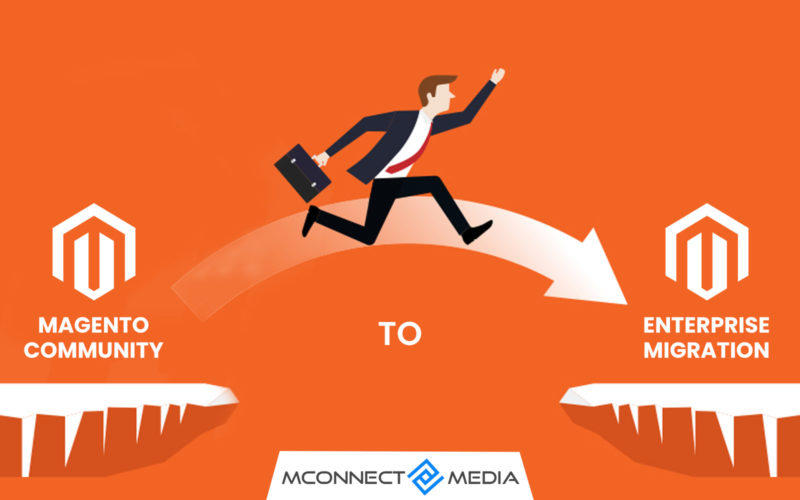



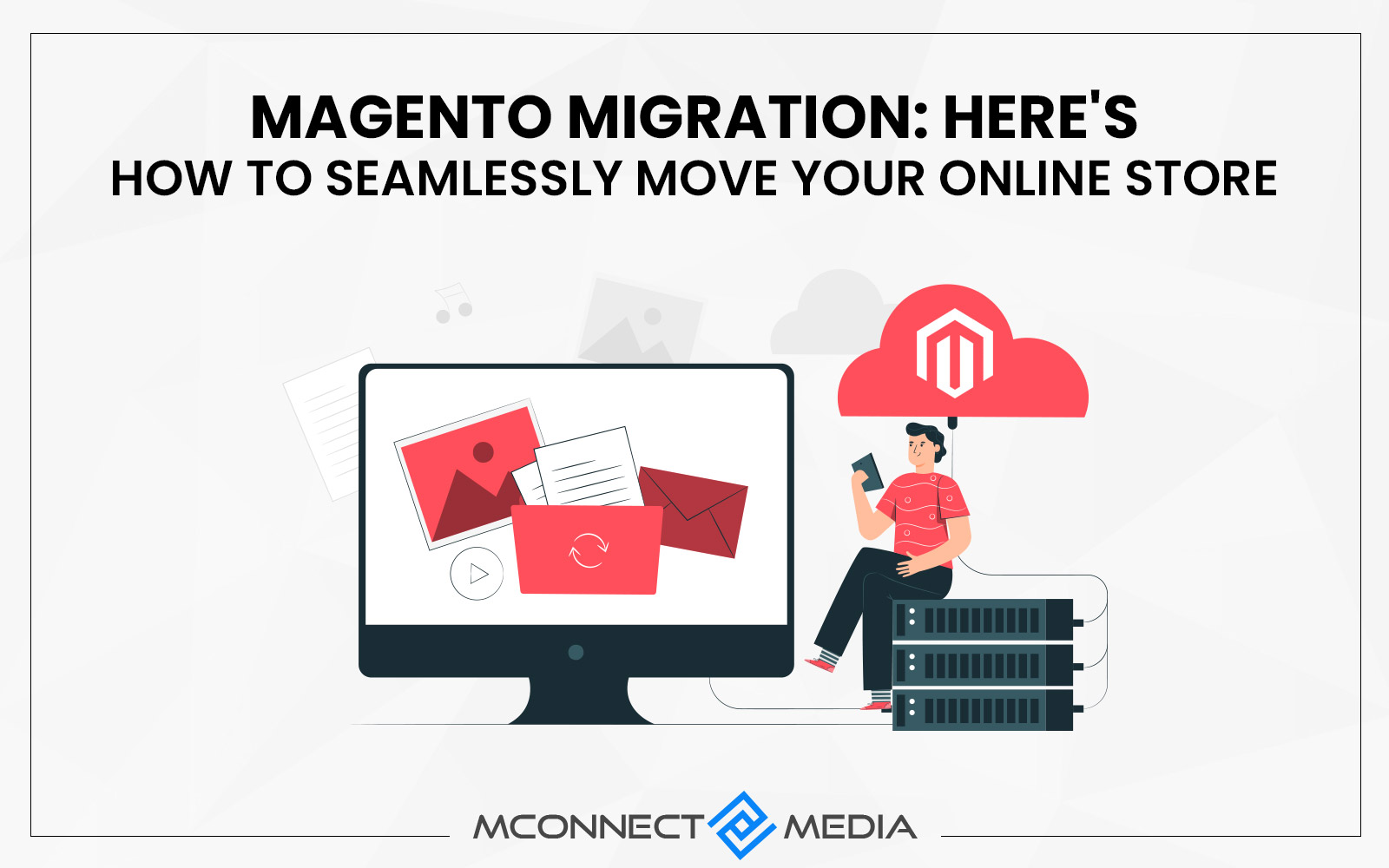

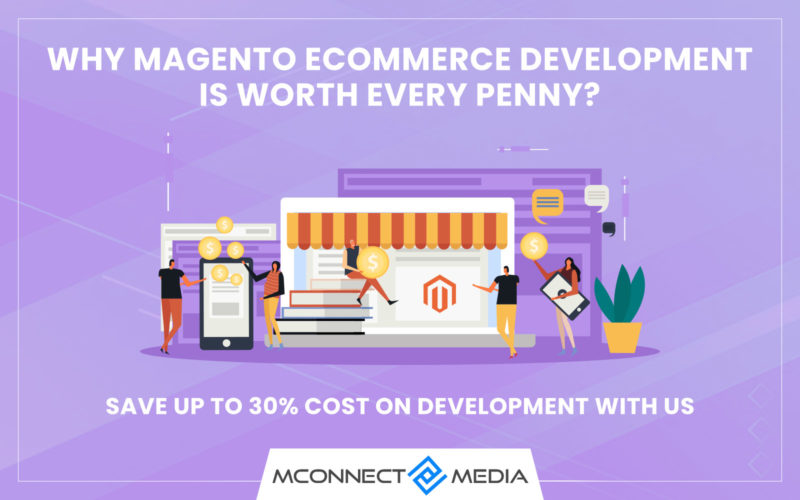
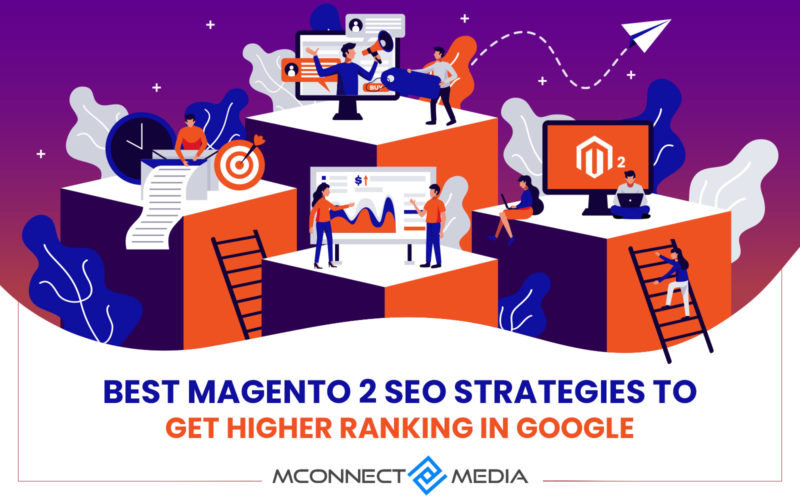

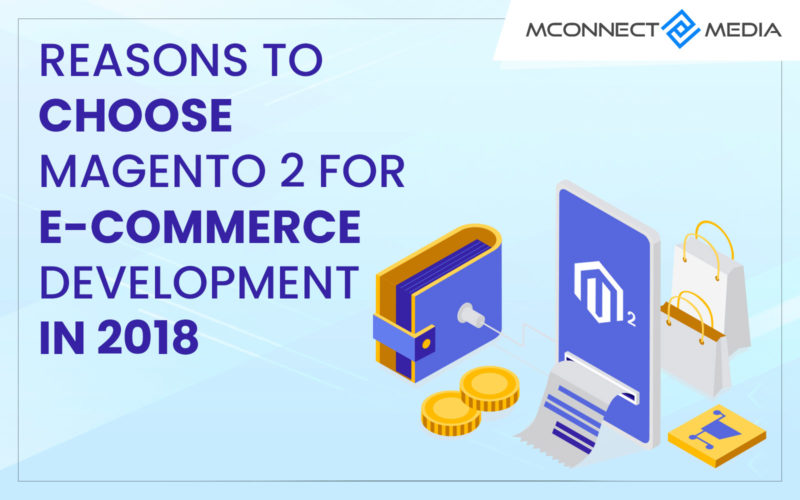
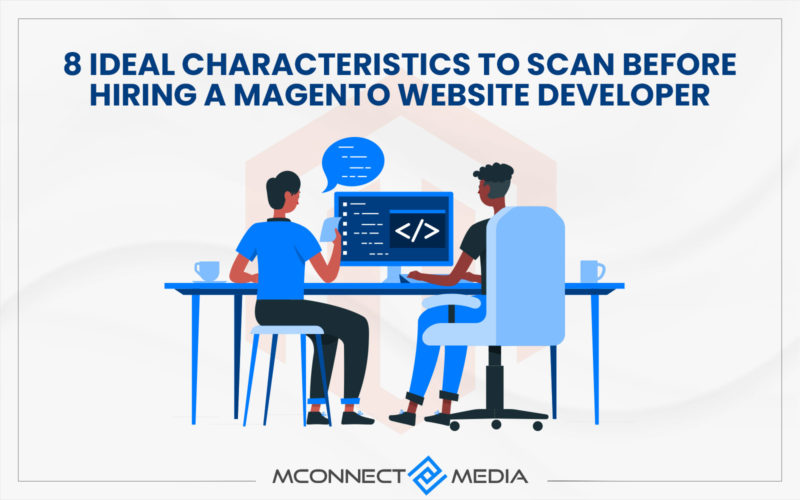
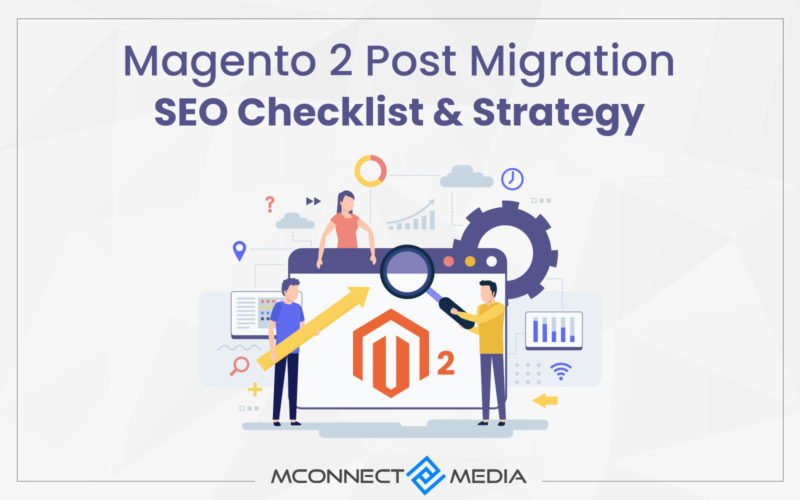
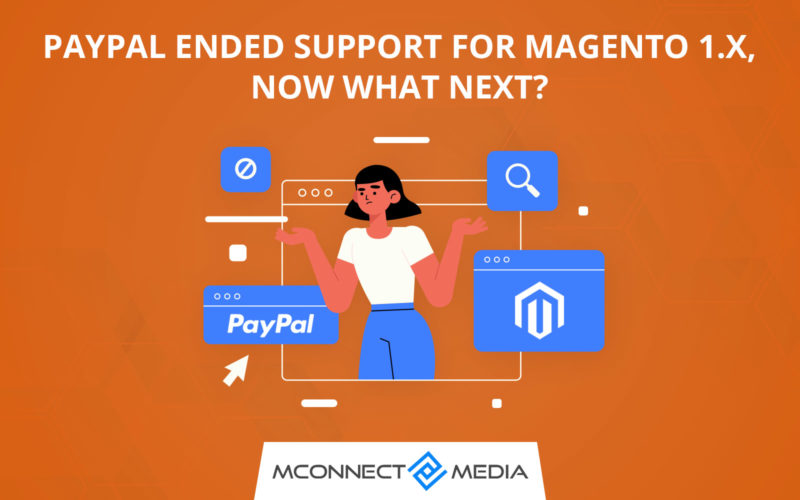
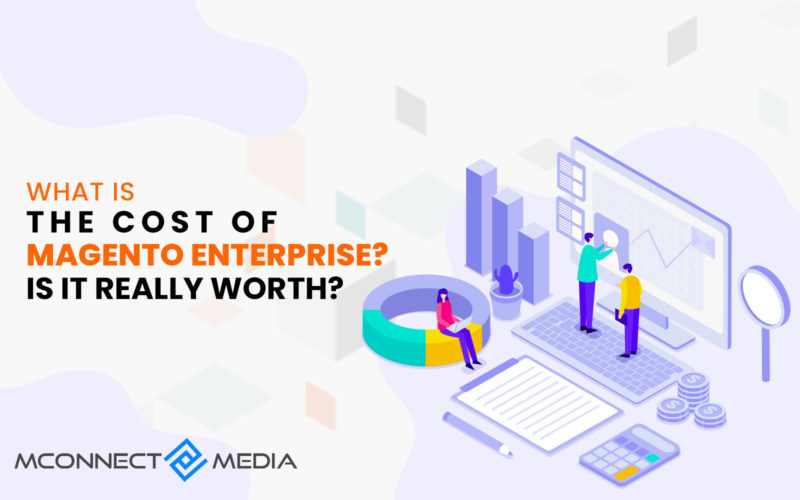

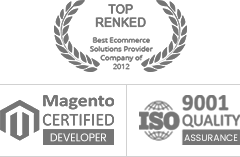
Nicely explained. Do you have any stuff related to migrating from Magento Enterprise version 1.9 to Magento Enterprise 2? I would appreciate if you can help.
A well written and well explained migration process. I came to know about what things to keep in mind and what steps to follow while migrating from community to enterprise edition of the Magento platform.